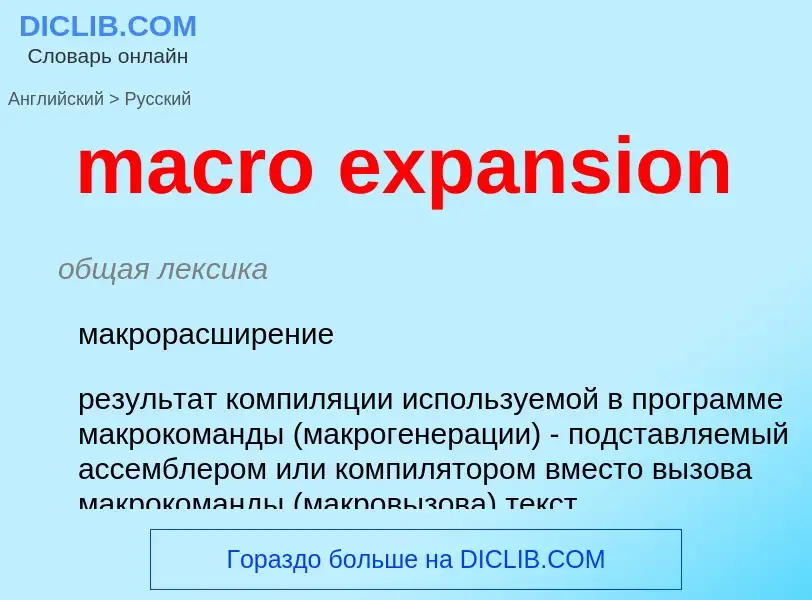Перевод и анализ слов искусственным интеллектом ChatGPT
На этой странице Вы можете получить подробный анализ слова или словосочетания, произведенный с помощью лучшей на сегодняшний день технологии искусственного интеллекта:
- как употребляется слово
- частота употребления
- используется оно чаще в устной или письменной речи
- варианты перевода слова
- примеры употребления (несколько фраз с переводом)
- этимология
macro expansion - перевод на Английский
общая лексика
макрорасширение
результат компиляции используемой в программе макрокоманды (макрогенерации) - подставляемый ассемблером или компилятором вместо вызова макрокоманды (макровызова) текст
Смотрите также
общая лексика
макрокоманда
общая лексика
макроподстановка, макрогенерация
процесс замены макрокоманды в исходном тексте соответствующим ей макрорасширением
Смотрите также
вычислительная техника
макрокоманда
макроопределение
математика
асимптотически сходящаяся
математика
асимптотический рост
математика
асимптотический ряд
Определение
Википедия

In computer programming, a macro (short for "macro instruction"; from Greek μακρο- 'long, large') is a rule or pattern that specifies how a certain input should be mapped to a replacement output. Applying a macro to an input is known as macro expansion. The input and output may be a sequence of lexical tokens or characters, or a syntax tree. Character macros are supported in software applications to make it easy to invoke common command sequences. Token and tree macros are supported in some programming languages to enable code reuse or to extend the language, sometimes for domain-specific languages.
Macros are used to make a sequence of computing instructions available to the programmer as a single program statement, making the programming task less tedious and less error-prone. (Thus, they are called "macros" because a "big" block of code can be expanded from a "small" sequence of characters.) Macros often allow positional or keyword parameters that dictate what the conditional assembler program generates and have been used to create entire programs or program suites according to such variables as operating system, platform or other factors. The term derives from "macro instruction", and such expansions were originally used in generating assembly language code.

![jEdit's]] macro editor jEdit's]] macro editor](https://commons.wikimedia.org/wiki/Special:FilePath/Jedit macro recorder.png?width=200)
![metric]] seen on the left. This visualization can be confusing because it appears as if the universe is expanding into a pre-existing empty space over time. Instead, the expansion created, and continues to create, all of known space and time. metric]] seen on the left. This visualization can be confusing because it appears as if the universe is expanding into a pre-existing empty space over time. Instead, the expansion created, and continues to create, all of known space and time.](https://commons.wikimedia.org/wiki/Special:FilePath/CMB Timeline300 no WMAP.jpg?width=200)

.png?width=200)
